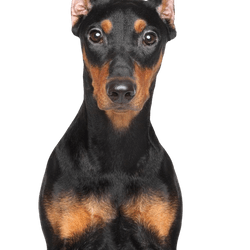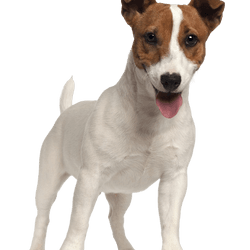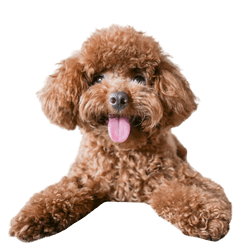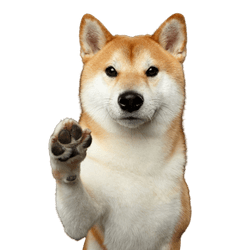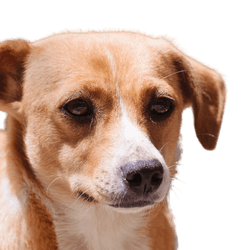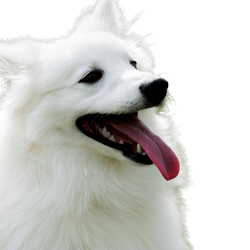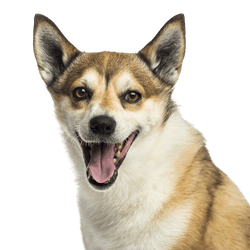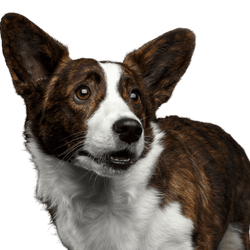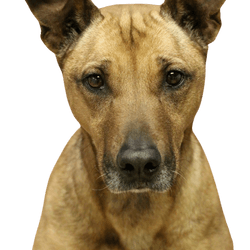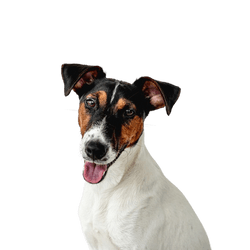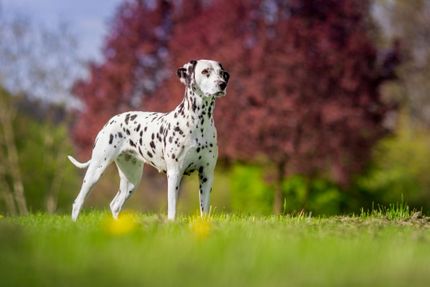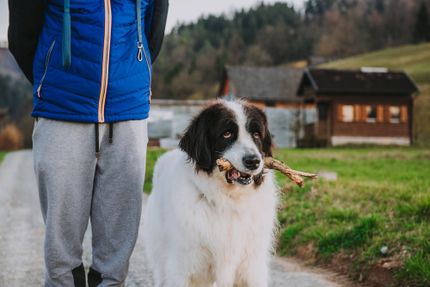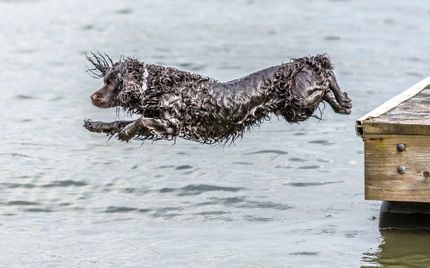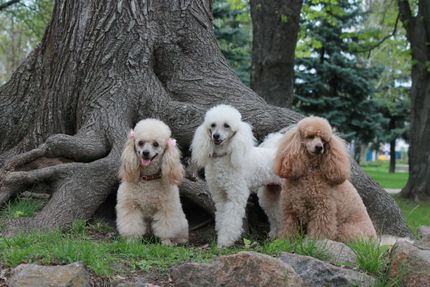
Basenji Breed description: Character & Co
Basenji
Facts & Origin
Basenji Dog Temperament und Breed description
The Basenji (canis lupus familiaris), also known as Congo Terrier, originates in Central Africa and is considered to be the oldest dog in the world. They belong to the group of the so-called Pariahounds, which are an original breed of dog that live in close proximity to humans, but without relying on them to be fed or cared for and therefore there is also doesn't exist a direct breeding selection. In this arrangement the Basenji used to live in former times and still does today together with the African natives and helps them with hunting. Since 1930, the breed has been systematically bred.
The FCI (the world's largest cynological umbrella organisation) recognises the Basenji as an independent breed. The dogs are registered under the FCI group 5 (point and primitive type dogs), section 6 (primitive type), standard no. 43, without working test.
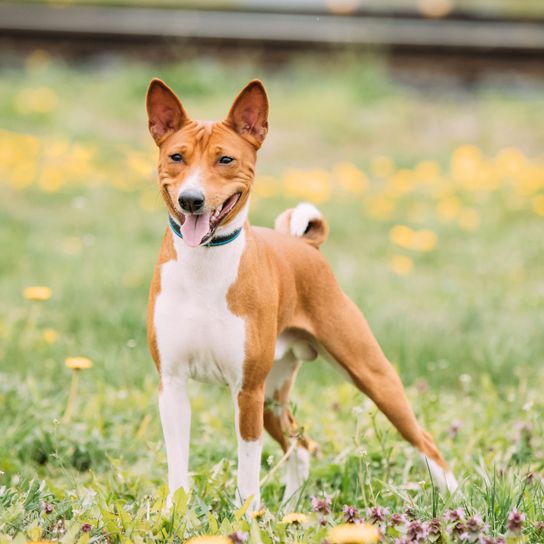
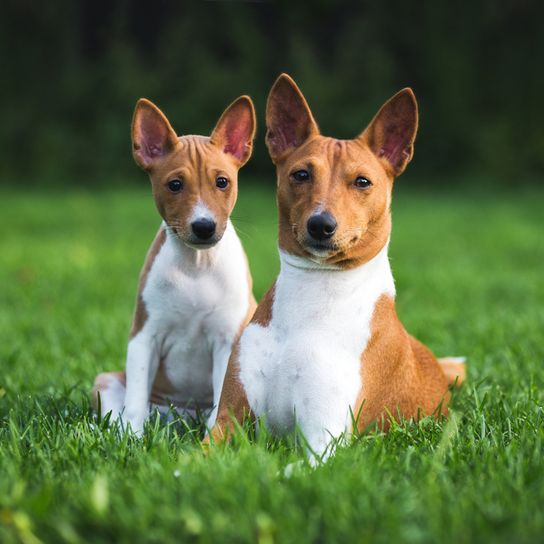
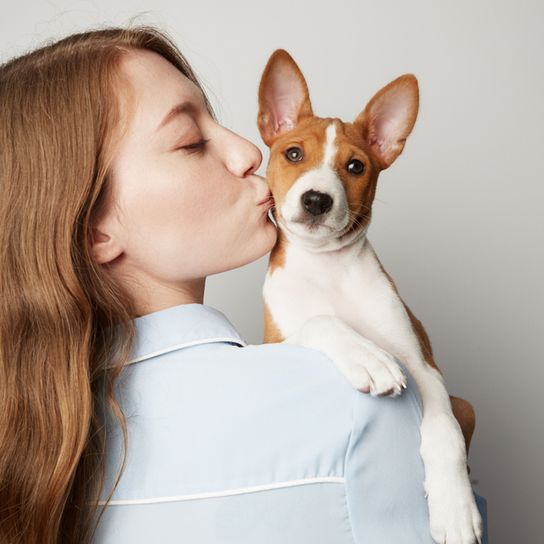
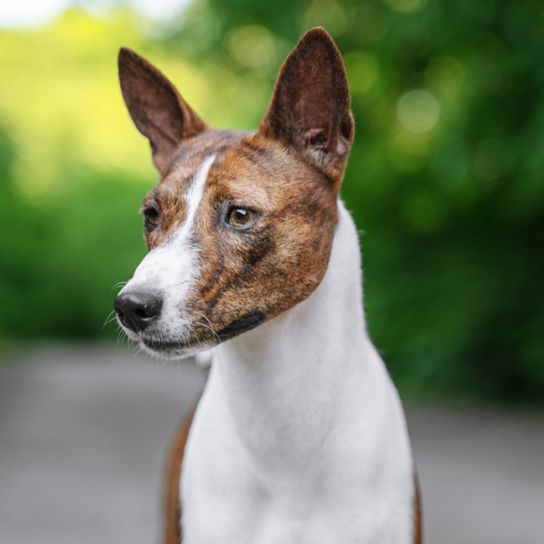
| Alternate Name | Kongo Terrier, Basenji |
| Origin | Democratic Republic of the Congo |
| Life expectancy | 12 - 15 years |
| Care requirements | low-maintenance |
| Activity level | average |
| FCI group | Primitive type |
| AKC group | Hound Group |
| KC group | Hound Group |
Attitude, character and temperament of the breed
Breed description and nature of the Congo Terrier
Sabenjis are self-confident, independent and intelligent dogs. They are extremely clean, almost odourless, hardly shed any hair and are therefore also very suitable for allergy sufferers. The dogs learn quickly, adapt well to their family environment, but need constant attention. Additionally they need plenty of space to move, exercise and they need to be mentally stimulated. Some also tend to stray. The dogs should therefore not be left running around freely without supervision. Their innate, strongly developed hunting instinct can lead to them running after anything that moves. Unfortunately this is no different with cars or trams. Therefore, it is better to keep them on a leash, especially next to the street. It is advisable to use an extendable leash.
Attitude and training
Basenjis are not suitable dogs for first-time owners. It is difficult to train these naturally reserved, independent dogs. These stubborn dogs can drive inexperienced dog owners to despair since they are they love to fo their own way and always do what they want. Only with a lot of experience and patience you will sucessfully manage to teach them basis commands. These dogs cannot be trained. But with good leadership, without treating them too harshly and a lot of empathy for your dog's needs, they will usually show obedience. Inappropriate strictness and harshness leads to disobedience and retreat. However, if you meet them with sufficient empathy, the dogs evolve into affectionate and playful family members. They are pack animals by nature and don't like to be left alone for too long. It is therefore advisable to keep them together with other dogs.
Character
Usage
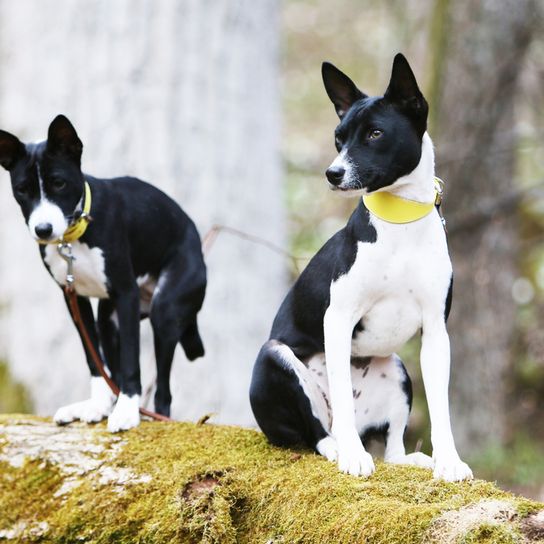

Health and breeding information
Care and nutrition
The extremely clean dogs hardly require grooming. Basenjis clean and groom themselves and each other very intensively. For this they also use their paws. In this characteristic they resemble cats. However, when the coat changes, once a year before the beginning of summertime, it should be brushed regularly. For feeding, a high-quality wet or dry food with a high meat content, without cereals, should be used. As the breed is an efficient food-converter and tends to be overweight, the portions should be rationed while keeping an eye on their weight. Dried chewing treats such as dried cow skin are well suited since they don't support weight gain and also clean their teeth. Sufficient drinking water should always be within reach for them.
Typical diseases of Basenjis
Because of the small gene pool when official breeding started, the Basenji also has some dispositions for certain hereditary diseases:
- Fanconi syndrome: kidney dysfunction.
- Hemolytic dysplasia: progressive decay of red blood cells (erythrocytes).
- Hip dysplasia (HD: maldevelopment of the hip joint).
- Persistent pupilar membrane: thread-like remains of the fetal pupil remain in the dog's inner eye and can cause visual disturbances.
- Progressive Retinal Atrophy: Slowly progressing deterioration of the retina.
In any case, regular eye examinations, x-rays for HD and a genetic test for Fanconi syndrome should be performed.
Things to know about Basenjis
The breed has some peculiarities that should be known to the owner. For example, Basenjis have an innate fear of the dark. In their original home Africa darkness meant danger. Their lack of body odour is also for their self-protection. Those who cannot be smelled will also not get noticed. In our latitudes, however, this characteristic, which is quite useful in Africa, sometimes leads to the Basenji being attacked by foreign dogs, as they cannot smell the Basenji. The dogs do not bark either, they make themselves noticeable with a yodel-like sound. In the USA and Europe these unusual dogs are becoming increasingly popular. To buy a Basenji, you should contact the Verband für das Deutsche Hundewesen (VDH). There you can find addresses of reputable breeders.

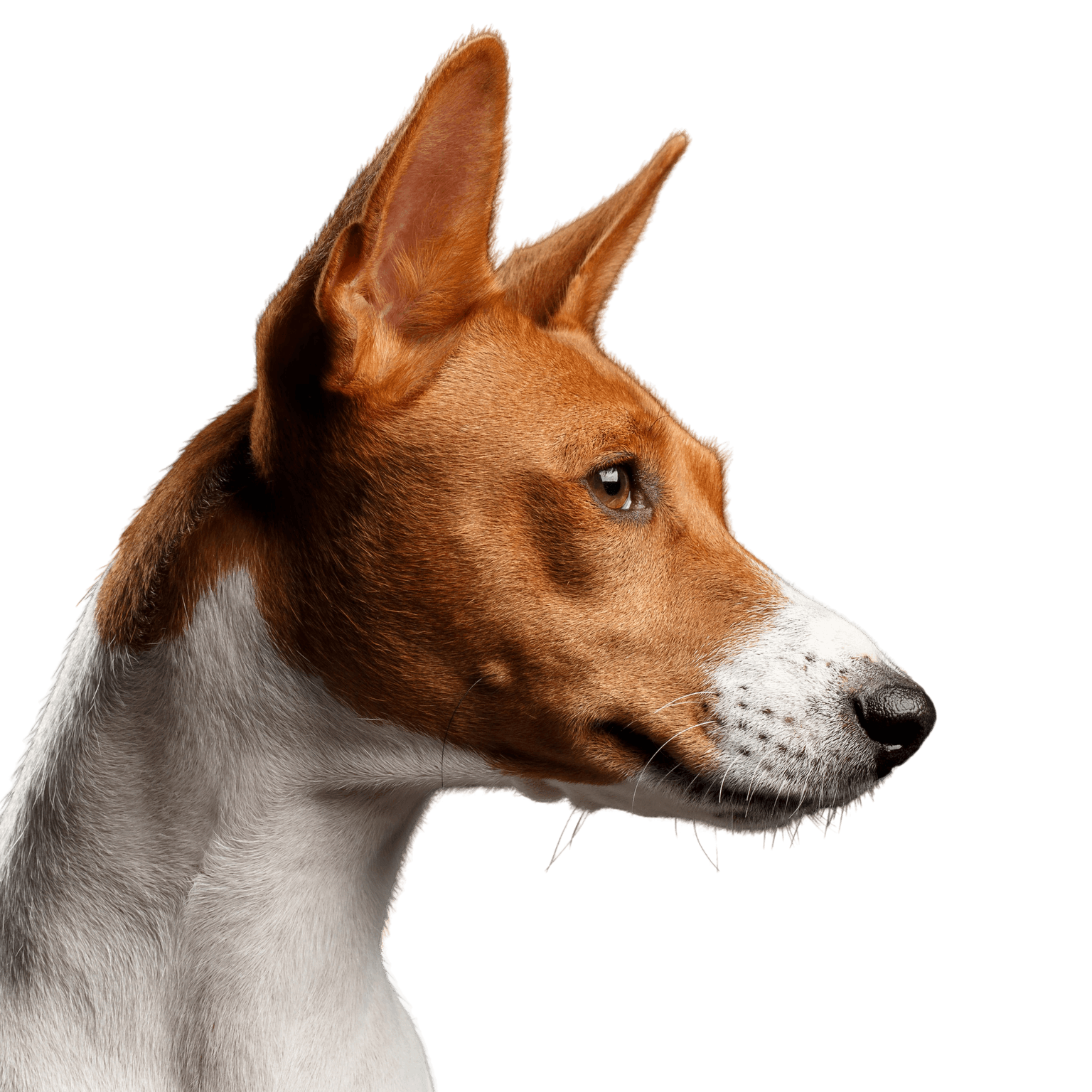
Breed characteristics and appearance of the Basenji
The Basenji is a medium-sized dog that has a light-boned physique. The short dense coat of the dogs is fine and shiny.
The coat colours vary from
- pure black and white to
- red-brown or
- white,
- black,
- tan or
- white with markings above the eyes.
- There are also brindled specimens with black stripes on a red-brown base colour.
The dogs have a white area that reaches from the neck to the chest. The curled tail always has a white tip at the end. Characteristic for the breed are their fine wrinkles, which can be found on the forehead and partly also on the sides of the dog's head. They can best be seen when the dogs have their ears stood up. The diagonally set dark brown eyes are almond-shaped. The males reach a withers height of 43 cm and a weight of 11 kg. The bitches are somewhat smaller with a height of 40 cm measured at the withers and with a body weight of 9.5 kg they are also somewhat lighter. The life expectancy of the dogs is 12-17 years. In individual cases also more.
| Fur length | short |
| Fur | flat coated |
| Ear shape | Standing Ears |
| Tail | rolled up |
| Anatomy | muscular, sporty |
| Size ♀ | 38 - 41 cm |
| Weight ♀ | 9 - 11 kg |
| Size ♂ | 41 - 43 cm |
| Weight ♂ | 10 - 12 kg |
| Suitable For | suitable for allergy sufferers |
Colors

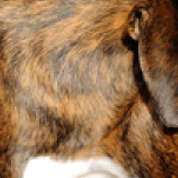

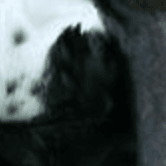
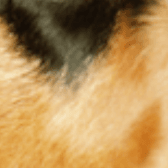



Known Diseases
Eye infections
Chronic eye infections can be very painful in dogs and can be treated with medication. In rare cases, the cornea must be treated.
Kidney disease
Symptoms of kidney disease in dogs: increased urination (polyuria) increased water intake. Inflammation of the mucous membrane of the mouth. Loss of appetite
Other medium dogs
Useful Articles
You can find articles that might interest you in the dogbible blog to match your favorite breed.
Visit our magazineto stay up to date on dog trends.
To find out more, view our Privacy Policy
Find here the breed that suits you and find out what character traits it has. Here you can also learn more about the origin, size and weight of your favorite breeds.
Matching your favorite breed, you'll find articles that might interest you on the dogbible dog blog.
Roller skating or skateboarding with the dog
These foods are poison for dogs
Bathing in Carinthia with dog - these are the most beautiful tips and places

